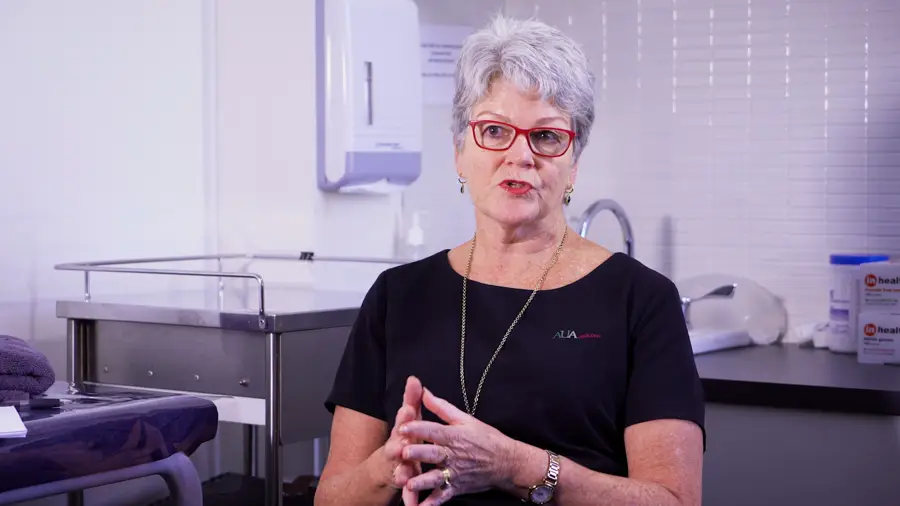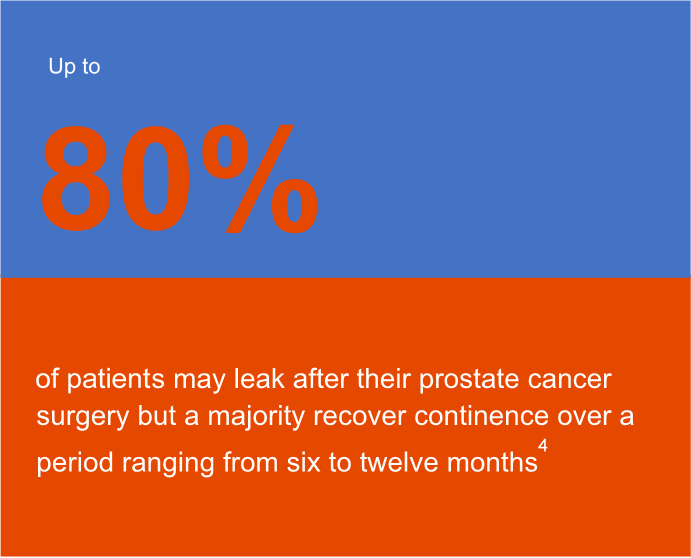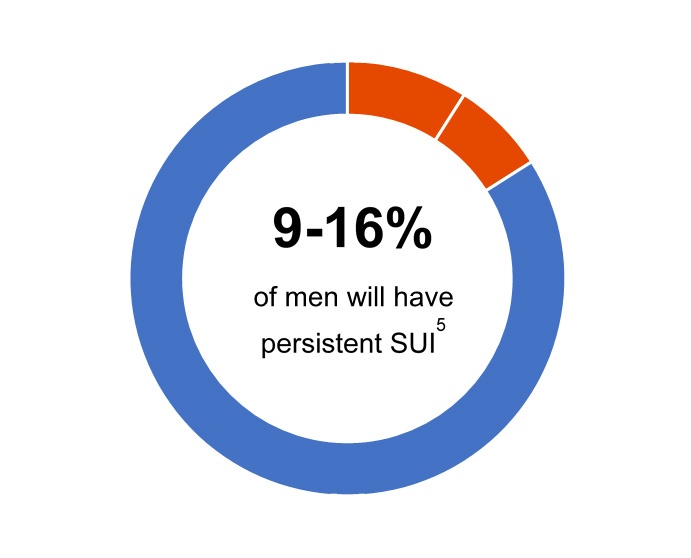The Link between Incontinence and Prostate Cancer Surgery
![]()
Take the Quiz
Take our quiz to identify if you are experiencing urinary incontinence symptoms and help kick-start the conversation with your doctor.
Questions to Ask
Helpful hints on how to start the conversation with your GP or urologist, and other useful resources.
References:
- Mayo Clinic. Urinary incontinence in men. June 2014. http://www.mayoclinic.org/diseases-conditions/urinary-incontinence/basics/causes/con-20037883. Accessed September 13, 2016.
- Prostate Cancer Statistics. (2015, December 17). Retrieved from https://prostate-cancer.canceraustralia.gov.au/statistics
- Radical prostatectomy hospital admissions 40 years and over. (2015). Australian Atlas of Healthcare,129-134. Retrieved July 16, 2019.
- Hoyland, K., Vasdev, N., Abrof, A., & Boustead, G. (2014). Post-radical prostatectomy incontinence: etiology and prevention. Reviews in urology, 16(4), 181–188.
- Ficarra V, Novara G, Rosen RC, et al. Systematic review and meta-analysis of studies reporting urinary continence recovery after robot-assisted radical prostatectomy. Eur Urol. 2012 Sep;62(3):405-17.
- Prostate Cancer: Urinary Incontinence. WebMD Website. http://www.webmd.com/urinary-incontinence-oab/mens-guide/urinary-incontinence. Accessed September 13, 2016.
- Chung, E., Katz, D. J., & Love, C. (2017). Adult male stress and urge urinary incontinence – A review of pathophysiology and treatment strategies for voiding dysfunction in men. Australian Family Physician, 46(9), 661–666.
- About Incontinence—Contributing Factors—Prostate Problems in Men. The Simon Foundation for Continence. http://www.simonfoundation.org/about_incontinence_contributing_factors_prostate.html. Accessed September 13, 2016.
- Sandhu JS. Treatment options for male stress urinary incontinence. Nat Rev Urol. 2010 Apr;7(4):222-8.3.
- Herschorn S, Bruschini H, Comiter C, et al. Surgical treatment of stress incontinence in men. Neurourol Urodyn. 2010;29(1):179-90.
- Kotkin L, Koch MO. Impotence and incontinence after immediate realignment of posterior urethral trauma: result of injury or management? J Urol. 1996 May;155(5):1600-3.
- Data on file with Boston Scientific. Based on market research by Dymedex
Results from case studies are not necessarily predictive of results in other cases. Results in other cases may vary. All images are the property of Boston Scientific. All trademarks are the property of their respective owners.
Disclaimer: Individual symptoms, situations, circumstances and results may vary. This information is not intended to be used for medical diagnosis or treatment or as a substitute for professional medical advice. Please consult your doctor or qualified healthcare provider regarding your condition and appropriate medical treatment.
These Videos are meant for informational purposes only and may not be indicative of clinical outcome. The opinions, procedures and patient care policies expressed or depicted in the videos are those of the physician or practice nurse and do not necessarily reflect the opinions, policies or recommendations of Boston Scientific Corporation or any of its employees.
This site is intended for Australian residents only. Please review the Boston Scientific Privacy Policy, for practices on the collection, storage, use and disclosure of your personal information.
CAUTION : Indications, contraindications, warnings and instructions for use can be found in the product labelling supplied with each device.





